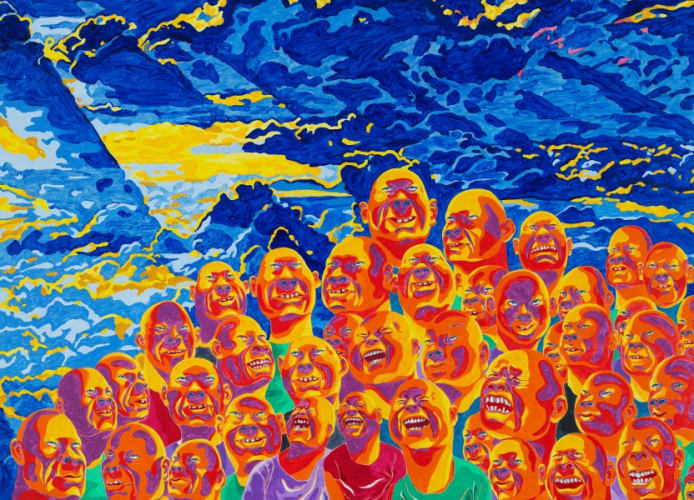The Chinese art scene has been evolving rapidly over the past few years, reflecting the country’s rapid economic growth and cultural shifts. The art scene is diverse, vibrant, and dynamic, with a range of trends emerging that are shaping the future of Chinese art. Here are some of the key trends that are currently influencing the Chinese art scene.

1. The Rise of Contemporary Art
Contemporary art has gained significant traction in China over the past decade. This trend has been driven by a new generation of artists who are pushing the boundaries of traditional Chinese art, experimenting with new forms, materials, and themes. These artists are not only drawing from their Chinese heritage but also incorporating influences from Western contemporary art, creating a unique fusion of styles.
The rise of contemporary art in China has been facilitated by the establishment of numerous contemporary art museums and galleries, such as the Ullens Center for Contemporary Art in Beijing and the Power Station of Art in Shanghai. These institutions have provided a platform for contemporary artists to showcase their work and have helped to foster a culture of art appreciation among the Chinese public.
2. The Emergence of Digital Art
Digital art is another trend that is gaining momentum in the Chinese art scene. With the proliferation of digital technologies, artists are increasingly using digital tools to create innovative and interactive artworks. This trend is particularly popular among younger artists who are comfortable with technology and eager to explore its artistic possibilities.
Digital art in China is not just limited to visual art; it also encompasses music, performance, and multimedia installations. The popularity of digital art has been boosted by events such as the Beijing International Digital Art Exhibition, which showcases the latest developments in digital art from around the world.
3. The Revival of Traditional Art Forms
While contemporary and digital art are on the rise, traditional Chinese art forms are also experiencing a revival. This trend is driven by a renewed interest in Chinese culture and heritage, particularly among the younger generation. Traditional art forms such as ink painting, calligraphy, and ceramics are being reinterpreted and reinvented in new and exciting ways.
This revival of traditional art forms is not just about nostalgia; it’s also about asserting a distinct Chinese identity in the global art scene. Many Chinese artists are using traditional techniques and motifs to express contemporary themes and issues, creating a dialogue between the past and the present.
4. The Growth of the Art Market
The Chinese art market has been growing at an impressive rate, becoming one of the largest in the world. This growth has been fueled by the rising wealth of the Chinese middle class, who are increasingly investing in art as a form of cultural capital.
The art market in China is not just focused on Chinese art; there is also a strong demand for Western art. Auction houses such as Sotheby’s and Christie’s have been doing brisk business in China, selling works by Western masters to Chinese collectors.
5. The Influence of Social Media
Social media is playing a crucial role in the Chinese art scene, providing a platform for artists to showcase their work and connect with audiences. Platforms like WeChat and Weibo are used by artists to share their work, while online art platforms like Artron and HiArt serve as virtual galleries and marketplaces.
In conclusion, the Chinese art scene is in a state of flux, with a range of trends shaping its future direction. Whether it’s the rise of contemporary art, the emergence of digital art, the revival of traditional art forms, the growth of the art market, or the influence of social media, these trends reflect the dynamism and diversity of the Chinese art scene. As China continues to grow and evolve, so too will its art scene, offering exciting possibilities for artists and art lovers alike.
